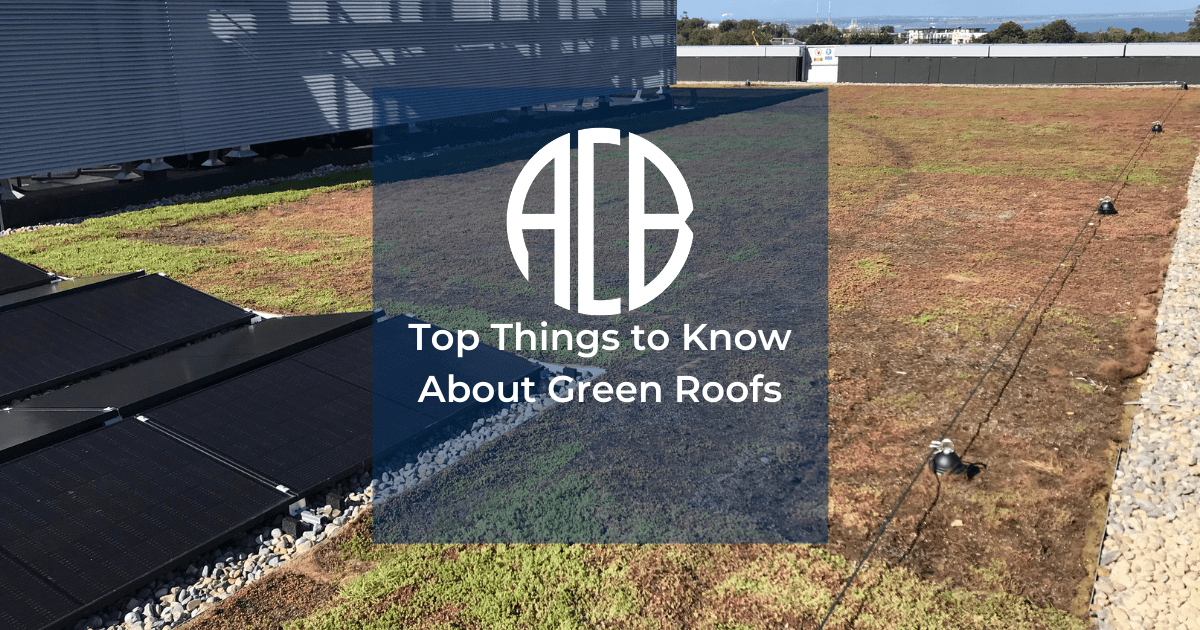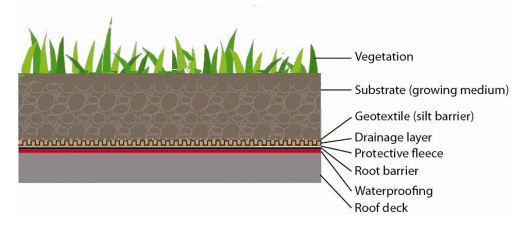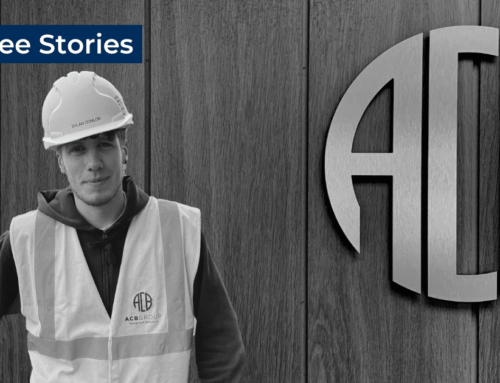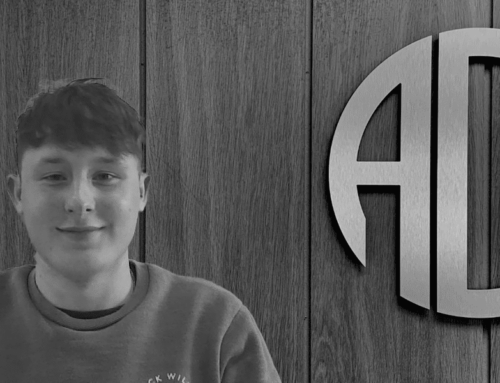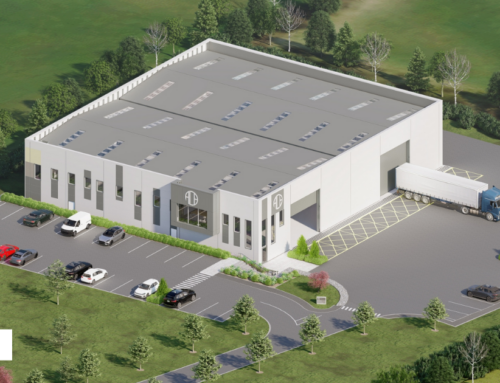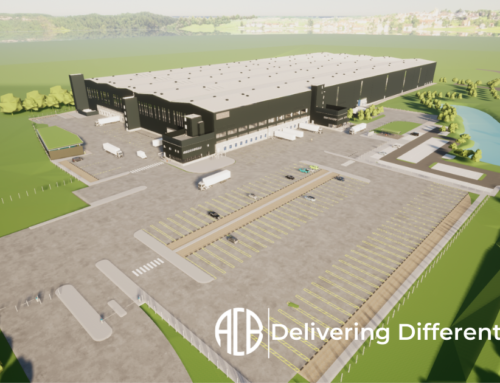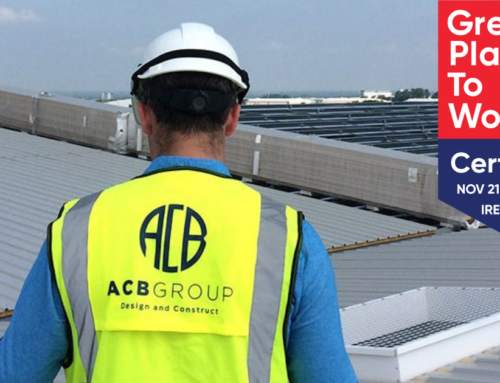What is a green roof?
Green roofs are essentially living roofs that support the growth of vegetation. All green roofs must-have features including waterproofing and root repellant top membranes that prevent root penetration through the roof area, so the roof does not become damaged.
In certain European countries, such as Germany and in Ireland (Dublin) there are requirements that some roofs that are installed need to be green roofs. The popularity of green roofs has soared recently due to their positive environmental impact.
Three types
1. Extensive Green Roofs
These types of green roofs are designed to focus on environmental solutions. Extensive green roofs are best advised to be installed on large flat roof projects. These types of green roofs are designed to support plants and other pollinators meaning there is a lower maintenance requirement. Sedum roof types are drought tolerant and are also able to weather the most extreme climates.
2. Intensive Green Roofs
These roofs require substantially more maintenance than Extensive Green Roofs. These are essentially rooftop gardens and recreational areas where plants and trees are planted. There is a significantly larger weight loading needed for the roof to support the recreational activities that would take place.
3. Biodiverse Green Roof
These types of green roofs are usually specified through the need to recreate habitats that are lost to new developments. This style of green roof would have wildflowers and grass planted for species in the area.
Benefits of a Green Roof
One of the key benefits of a green roof is an improved rainwater management system. This allows rainwater to be absorbed by the plants, providing relief to the drainage systems. In events where there are long persistent rainfall events, drains may not be designed to carry such volumes therefore green roofs can mitigate this risk.
Since we have seen an increase in flooding in built-up areas, developers are encouraged to install Sustainable Urban Drainage Systems on new developments. Intensive Green Roofs can have water retention capabilities of up to 90%.
Green Roofs also reduce the energy usage of buildings. Evapotranspiration removes heat from the air. This is essentially the conversion of water from liquid to gas which occurs around vegetation. The heat from the air is used to evaporate water to lower temperatures. The layers of build-up used in a green roof provide insulation to decrease the amount of heat leaving the building.
How Long Does a Green Roof Last?
Green roofs have a life expectancy of between 40-50 years.
Materials used in a Green Roof?
- Anti-root Cap sheet
- Drainage Mat
- Substrate / growing medium
- Sedum blanket
- Filter Sheet
- Vapour Control Layer
Design Considerations for Green Roofs
Local Regulations
In some regions, local laws and regulations encourage the uptake in installing green roofs on construction projects. In a case study by Climate Adapt, they explained how the city of Hamburg in Germany set out goals to become greener. Hamburg is the first German city to have developed a green roof strategy.
There are around 70% of suitable rooftops in Hamburg planned to be installed in green roof solutions, aimed at supporting the biodiversity and climate change adjustment aims of the city.
Dublin-based County Councils are championing Ireland’s Green Roof agenda. Dun Laoghaire-Rathdown County Council in Dublin actively encourage green roof installation. A green roof proposal is a requirement where a roof area is greater than 300 square metres for certain developments including Employment Developments and Educational Facilities.
According to DRCC at least 60% of the roof area should be covered by a green roof where there is a requirement for one to be installed.
Fire Considerations
Green Roofs should be designed appropriately to be able to provide necessary resistance to fire. To help resistance to external fire spread the follow steps should be taken:
- Increase the non-combustible used in the growing medium.
- Decrease the organic content of the growing medium.
- Prevent the system from drying out.
They look good!
Green roofs are aesthetically pleasing to look at. ACB Group has successfully completed green roof systems on a number of projects. We are particularly proud to have successfully completed green roofs at the new Park Ri facility in Kells and also at a new office block at Arkle Road.
ACB offers a full suite of design, detailing and technical support for green roof solutions and would be happy to answer your questions about upcoming projects.
Other Design Considerations
- Location – how much rainfall does the area get, and the overall local climate?
- Structural factors – considering the weight-bearing of the roof, the angle of the roof.
Green Roof Certifications
Breeam is the leading sustainability assessment method for projects. Breeam recognises that there is value in the built environment of assets being high performing and sustainable. Mitigating risk against climate change through sustainable construction methods is something focused on by Breeam and ACB Group.
Leadership in Energy and Environmental Design (LEED) points can also be gained from green roof installation on buildings. LEED is a rating system that is used to certify sustainable buildings and neighbourhoods. With the growing focus on sustainability and energy conservations, large Multinationals are navigating towards a green roof solution to contribute to their LEED points.
ACB Group Lessons Learned
ACB Group has experience with Green roof installations and we take lessons learned as a continuous improvement piece.
- The installing contractor must maintain the integrity of the roof until the handover of the project is completed.
2. There is a certain time frame between delivery to the site and being installed. Suppliers will have detailed instructions in their tech Subs on this.
3. Ensure that the edges of the sedum edge trim are installed correctly so the blanket does not lift up due to high winds.
Key Takeaways
- There are three types of green roofs – Extensive, Intensive and Bio Diverse.
- Green roofs are good for rainwater management.
- Green roofs can reduce the energy usage of buildings.
- Green roofs should have the necessary resistance to fire.
- LEED is a rating system that is used to certify sustainable buildings.

